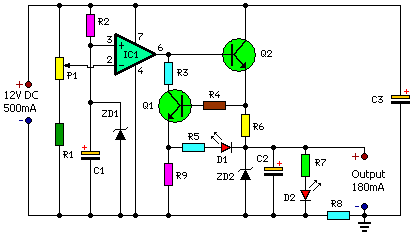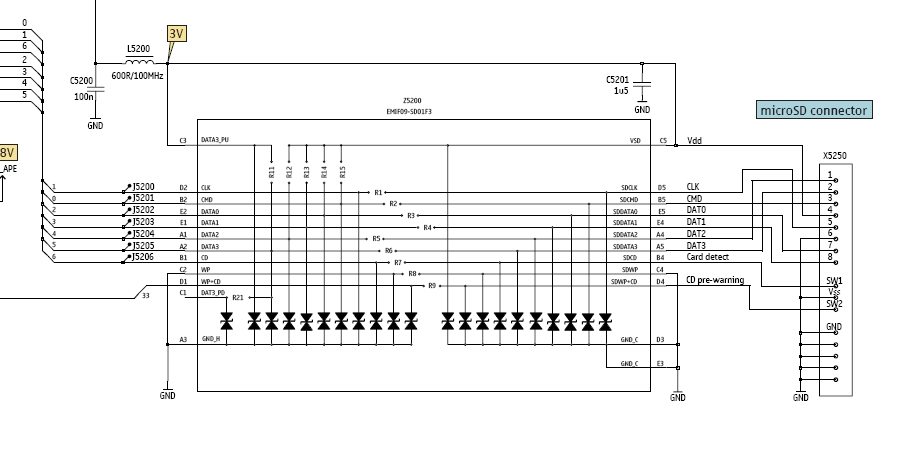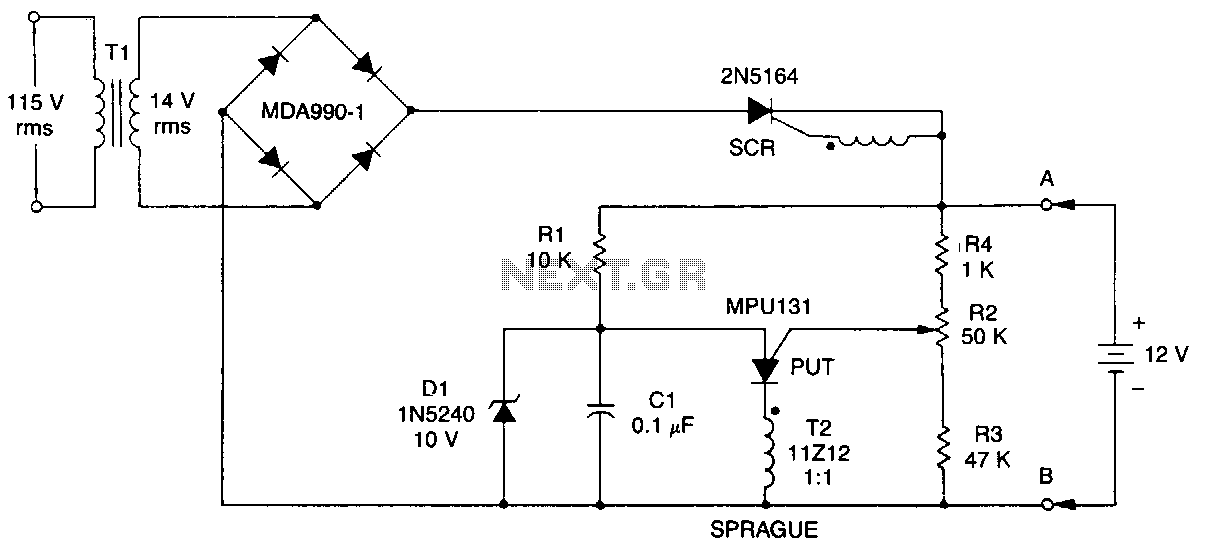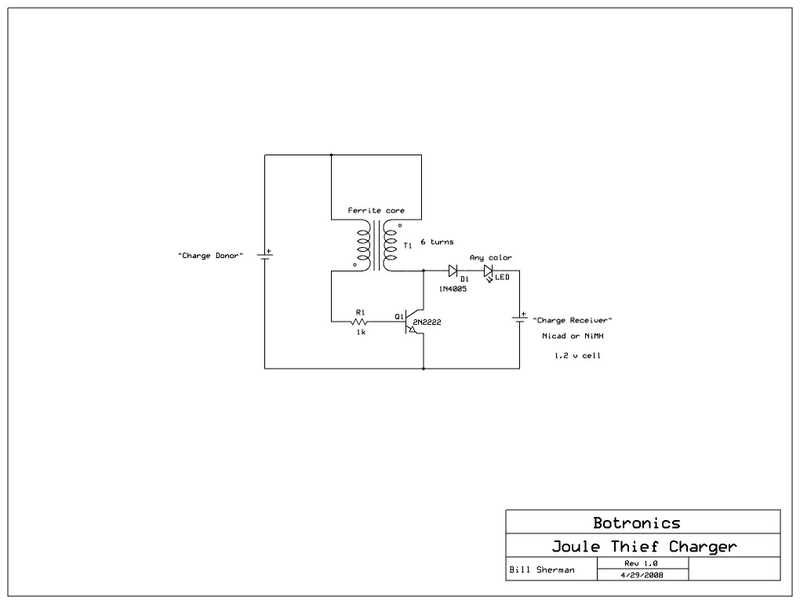
a friendly charger schematic for mobile phones

Most mobile chargers lack current and voltage regulation as well as short-circuit protection. These chargers supply unregulated 6-12V DC for charging battery packs. Typical mobile phone battery packs are rated at 3.6V and 650mAh. To enhance battery longevity, it is recommended to charge at a low current, ideally between 150-200mA, over a period of six to ten hours. This method minimizes battery heating and prolongs its lifespan.
Mobile chargers typically employ a simple power supply circuit that converts AC mains voltage to a DC output. The absence of current and voltage regulation in many designs can lead to overcharging and potential damage to the battery. A common practice in charger design involves using a transformer to step down the mains voltage to a suitable level, followed by a rectifier circuit that converts the AC voltage to DC. However, without additional components such as voltage regulators or current limiters, the output voltage can fluctuate within the range of 6-12V, which is unsuitable for charging lithium-ion battery packs rated at 3.6V.
To enhance battery safety and longevity, a more sophisticated charger design is advisable. Incorporating a linear voltage regulator or a switching regulator can provide a stable output voltage tailored to the battery's requirements. Additionally, integrating a current-limiting resistor or a dedicated current regulation circuit can ensure that the charging current remains within the recommended range of 150-200mA. This approach not only prevents overheating but also mitigates the risks associated with overcharging.
Furthermore, adding short-circuit protection is crucial. This can be achieved through the use of a fuse or a resettable polyfuse, which will disconnect the charger in the event of a short circuit, protecting both the charger and the battery. Implementing these features results in a more reliable and efficient charging solution that extends the life of mobile phone battery packs while ensuring user safety.
In summary, while many mobile chargers operate without essential safety features, designing a charger with voltage regulation, current limiting, and short-circuit protection significantly improves battery health and overall device performance.Most mobile chargers do not have current/voltage regulation or short-circuit protection. These chargers provide raw 6-12V DC for charging the battery pack. Most of the mobile phone battery packs have a rating of 3.6V, 650mAh. For increasing the life of the battery, slow charging at low current is advisable. Six to ten hours of charging at 150-200mA current is a suitable option. This will prevent heating up of the battery and extend its life.. 🔗 External reference
Mobile chargers typically employ a simple power supply circuit that converts AC mains voltage to a DC output. The absence of current and voltage regulation in many designs can lead to overcharging and potential damage to the battery. A common practice in charger design involves using a transformer to step down the mains voltage to a suitable level, followed by a rectifier circuit that converts the AC voltage to DC. However, without additional components such as voltage regulators or current limiters, the output voltage can fluctuate within the range of 6-12V, which is unsuitable for charging lithium-ion battery packs rated at 3.6V.
To enhance battery safety and longevity, a more sophisticated charger design is advisable. Incorporating a linear voltage regulator or a switching regulator can provide a stable output voltage tailored to the battery's requirements. Additionally, integrating a current-limiting resistor or a dedicated current regulation circuit can ensure that the charging current remains within the recommended range of 150-200mA. This approach not only prevents overheating but also mitigates the risks associated with overcharging.
Furthermore, adding short-circuit protection is crucial. This can be achieved through the use of a fuse or a resettable polyfuse, which will disconnect the charger in the event of a short circuit, protecting both the charger and the battery. Implementing these features results in a more reliable and efficient charging solution that extends the life of mobile phone battery packs while ensuring user safety.
In summary, while many mobile chargers operate without essential safety features, designing a charger with voltage regulation, current limiting, and short-circuit protection significantly improves battery health and overall device performance.Most mobile chargers do not have current/voltage regulation or short-circuit protection. These chargers provide raw 6-12V DC for charging the battery pack. Most of the mobile phone battery packs have a rating of 3.6V, 650mAh. For increasing the life of the battery, slow charging at low current is advisable. Six to ten hours of charging at 150-200mA current is a suitable option. This will prevent heating up of the battery and extend its life.. 🔗 External reference





